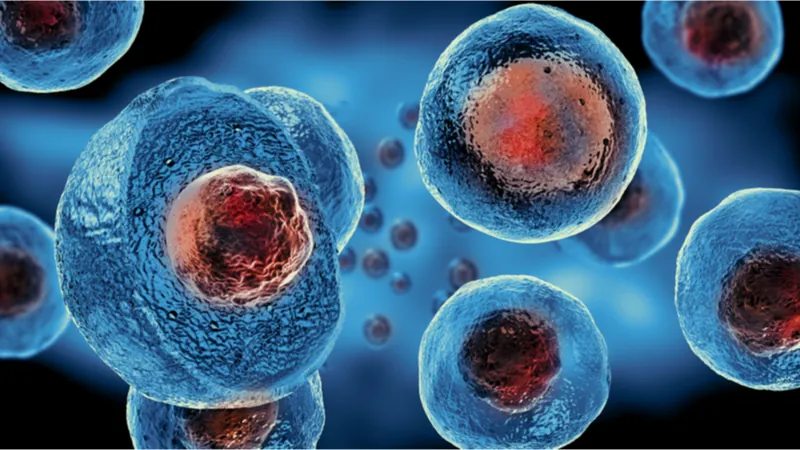Scientists have shown that a single cycle of partial cellular reprogramming leads to various changes in the tissues, but about half of them gradually disappear after the treatment [1].
Permanent or transient?
It has been known since 2006 that somatic cells can be reverted to a pluripotent stem cell-like state by overexpressing certain regulatory genes. This process, called reprogramming, also leads to cellular rejuvenation [2].

Read More
Full reprogramming can be useful, for instance, for creating stem cells from the patient’s own somatic cells, but it is not a good way to achieve rejuvenation in vivo, since reprogrammed cells often give rise to teratomas, tumors that are a mishmash of cells of various types [3].
Recently, the concept of partial reprogramming has been gaining popularity. The idea is to stop the reprogramming process before the cells reach pluripotency. The cells then regain their identity, and some rejuvenation occurs.
Though the feasibility of partial reprogramming has been proven by numerous studies, problems remain. It is not entirely clear what the best strategy for partial reprogramming is, how safe it is, what level of rejuvenation is achieved in the process, and how permanent this rejuvenation is.
Just one cycle
While scientists usually perform partial reprogramming via multiple cycles of reprogramming with pauses between them, the authors of this new study decided to analyze the effects of a single cycle. Changes were assessed immediately after the treatment, and then two and four weeks later.
The researchers used a genetically modified strain of mice, in which the expression of Yamanaka factors can be turned on and off by the drug doxycycline. The mice were treated with doxycycline for one week at the age of 55 weeks (equivalent to about 45 human years), when age-related changes are already discernible. The researchers used a low dose of the drug to achieve “mild” reprogramming.
The pancreas is known to be the tissue most responsive to in vivo cellular reprogramming. Following the reprogramming cycle, some histological changes were observed in the pancreas, but they disappeared after two weeks. Other organs, such as the liver and the spleen, did not show any visible changes following the treatment.
Further complicating things, not all cells in the tissues expressed Yamanaka factors uniformly. For instance, acinar cells of the pancreas broadly expressed SOX2 just 24 hours after the injection of doxycycline, unlike other pancreatic cell types. This shows that rejuvenating an organ or an organism through cellular reprogramming can be much trickier that rejuvenating cells in culture.
The researchers then looked for age-related changes in genome methylation, which is often used for measuring biological age. Multiple differences between old and young mice were detected, with partial reprogramming reverting some, but not all, of these differences to a youthful state. The reversal of age-related methylation changes was also detected in the liver, although it was less pronounced.
A half-empty or half-full glass
In all, about half of all methylation changes induced by the treatment disappeared after two weeks. There was an important distinction, however: most gain-of-methylation events (the reversal of age-related hypomethylation) happened immediately after the treatment, while most loss-of-methylation events (the reversal of age-related hypermethylation) happened during the follow-up period. The researchers suggest that the post-treatment phase might be just as important for molecular and cellular rejuvenation as the treatment itself.
While methylation status may hint at age-related changed in transcription, analyzing the transcriptome directly provides a more detailed picture. The transcriptomic analysis that the researchers ran for the pancreas also placed the treated old mice between the two control groups (young untreated and old untreated). The changes were highly age-related: most genes upregulated by the treatment in old mice had been downregulated by aging and vice versa.
The researchers then specifically analyzed several gene sets known to be relevant to aging. Many of them, such as those involved in mTOR signaling, protein homeostasis, and collagen production, were rejuvenated following the treatment. Yet again, some changes induced by the treatment waned during the follow-up period.
Reprogramming vs. senescence
Whether partial reprogramming can affect senescent cells is an intriguing question. The researchers checked for several markers of cellular senescence and did not detect any changes in them following the treatment. This might mean that a single cycle of reprogramming is just not enough to rejuvenate senescent cells, or it could hint at a more fundamental problem (if partial reprogramming cannot safely rejuvenate senescent cells, it might have to be combined with senolytics in future treatments).
Conclusion
Small-scale studies that analyze various aspects of partial cellular reprogramming have been plentiful lately, and they are indispensable for developing safe and effective treatments. This one poses important and intriguing questions and provides answers to some of them, though much more research in the field is needed.
Literature
[1] Chondronasiou, D., Gill, D., Mosteiro, L., Urdinguio, R. G., Berenguer-Llergo, A., Aguilera, M., … & Serrano, M. (2022). Multi-omic rejuvenation of naturally aged tissues by a single cycle of transient reprogramming. Aging Cell, e13578.
[2] Takahashi, K., & Yamanaka, S. (2006). Induction of pluripotent stem cells from mouse embryonic and adult fibroblast cultures by defined factors. cell, 126(4), 663-676.
[3] Abad, M., Mosteiro, L., Pantoja, C., Cañamero, M., Rayon, T., Ors, I., … & Serrano, M. (2013). Reprogramming in vivo produces teratomas and iPS cells with totipotency features. Nature, 502(7471), 340-345.




